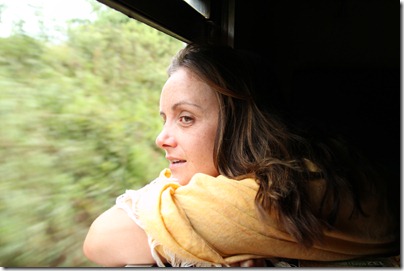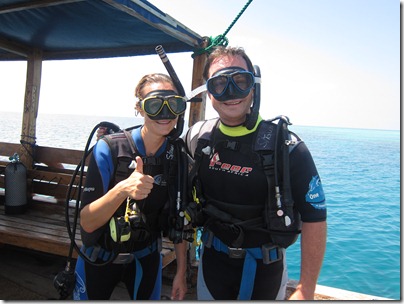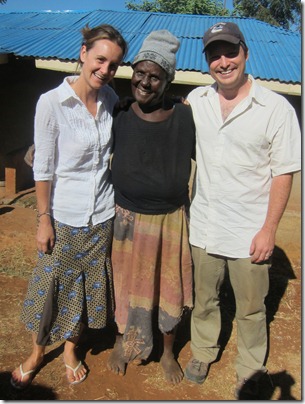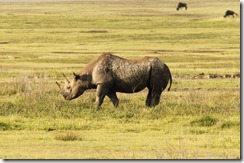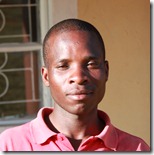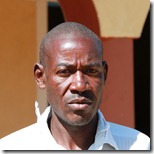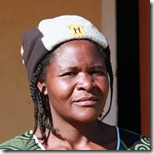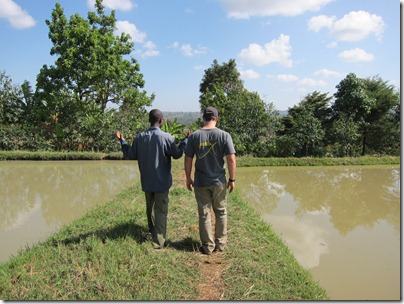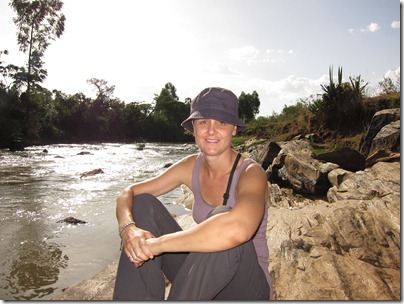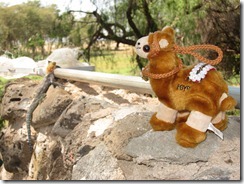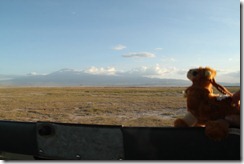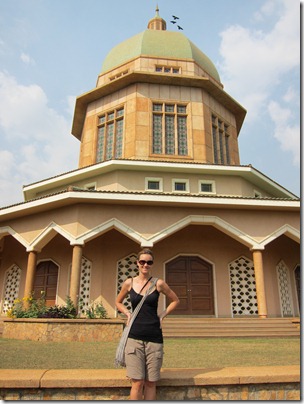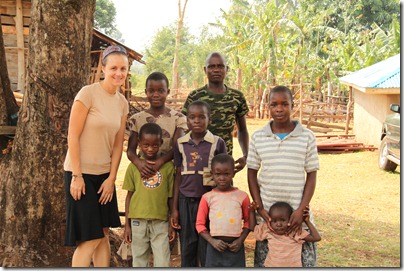 I’m writing this post from my comfortable window seat in our somewhat-obnoxious-but-effective “moonvehicle†that’s been the center of our lives for the last seven days. This leg of our journey has been in parts hectic, fun, dull, and exhilarating as we travel for long hours between campsites where we set up camp on arrival and take it apart (often very early) in the morning before departing for our next stop.
I’m writing this post from my comfortable window seat in our somewhat-obnoxious-but-effective “moonvehicle†that’s been the center of our lives for the last seven days. This leg of our journey has been in parts hectic, fun, dull, and exhilarating as we travel for long hours between campsites where we set up camp on arrival and take it apart (often very early) in the morning before departing for our next stop.
We left Zambia on the morning of the 24th after a last day wandering around the charming town of Livingstone. Livingstone is a curiosity because it is very Westernized, probably due to the flood of tourists that visit every year to see Victoria Falls. The people are extremely friendly and endlessly curious about Canada. They also seem to be walking encyclopedias about Canadian politics. “Aha, Canada! How is Steven Harper? Jean Chretien! Kim Campbell! Brian Mulroney!â€
From Livingstone, through Botswana and into South Africa, the Western influence asserts itself more and more as we’ve watched the Africa we’ve known for the last two-and-a-half months melt away to be replaced by gleaming shopping malls, well-maintained highways, and maybe most importantly, the first soft-serve ice-cream we’ve had since we got here. It’s nice to be back in surroundings that are more familiar, but there’s more than a little sense of yearning for the grittier lifestyle we’d adapted to in East Africa. It’s most likely exacerbated by the fact that our tour is on a tight schedule and the only stops we make are at malls for stocking up on supplies and at our campsites, which have been unfailingly well-equipped with running water, hot showers, and often a bar and a swimming pool. It affords us little time to get a sense for the real Africa of these places.
 Botswana in particular flew past in a 3-day blur of asphalt and concrete, although we did spend one fantastic night bush camping next to a watering hole in the heart of a jungle home to all sorts of wild things, including lions, leopards, hyenas, elephants, etc. Although I was kind of hoping to be woken by a lion’s roar, we had to settle for the trumpeting and crashing of a herd of elephants dropping by for a nighttime drink.
Botswana in particular flew past in a 3-day blur of asphalt and concrete, although we did spend one fantastic night bush camping next to a watering hole in the heart of a jungle home to all sorts of wild things, including lions, leopards, hyenas, elephants, etc. Although I was kind of hoping to be woken by a lion’s roar, we had to settle for the trumpeting and crashing of a herd of elephants dropping by for a nighttime drink.
 We were woken in the morning by a flash of lightning and a clap of thunder followed shortly by a downpour. Solo thunderclouds meander the landscape here and deliver the rain as though from a huge, heavenly hose.
We were woken in the morning by a flash of lightning and a clap of thunder followed shortly by a downpour. Solo thunderclouds meander the landscape here and deliver the rain as though from a huge, heavenly hose.
Despite the more modern infrastructure and homey amenities, much of the area is still wild and untouched. Elephants roam the forests and fields of Botswana; it’s not uncommon to see a herd of elephants grazing in a grove of trees beside a busy highway. Every campsite includes warnings to look out for snakes. In one campsite a seven-fingered helper showed us the baby spitting cobra he’d caught earlier that day, the foot-long snake writhing and rearing, its hood open as it tried to spit its venom into the helper’s eyes. The helper’s other three fingers were lost in an unfortunate incident with a puff adder.
From Botswana we passed into South Africa. The border crossing was quick and easy—they’ve all been for that matter, usually with little to no wait, a few friendly questions, a stamp and a visa and we’re on our way. We visited the world-famous and breathtaking Kruger National Park yesterday, another gem in Africa’s fabulous collection of wildlife reserves. Lots of animals, beautiful landscape, and without question the most petrifying and exhilarating encounter we’ve had with an animal to date.
 To make a long story short, this is what a family of white rhinos looks like standing on a road in the park.
To make a long story short, this is what a family of white rhinos looks like standing on a road in the park.
 And this is what the largest of those rhinos looks like a split second before it charges your vehicle, digging its horn into the undercarriage and lifting you a few inches off the ground before your driver speeds away.
And this is what the largest of those rhinos looks like a split second before it charges your vehicle, digging its horn into the undercarriage and lifting you a few inches off the ground before your driver speeds away.
Thankfully nobody was hurt, including the rhino. And it makes for a terrific story—nobody we’ve talked to, including guides, drivers, and rangers, have ever heard of or seen something like this happen.
 Mother nature celebrated our adventurous day by delivering us the most astounding thunderstorm I’ve ever seen. Lightning lit the sky almost constantly—at times it was more often light than dark, and sometimes the light was so bright it gave a momentary illusion of daylight. We stayed up to watch for as long as we could, but after a while the sprinkles gave way to a deluge and we were forced into our tents. We fell asleep last night to the sound of pouring rain and hyenas howling just outside the fence of the campsite.
Mother nature celebrated our adventurous day by delivering us the most astounding thunderstorm I’ve ever seen. Lightning lit the sky almost constantly—at times it was more often light than dark, and sometimes the light was so bright it gave a momentary illusion of daylight. We stayed up to watch for as long as we could, but after a while the sprinkles gave way to a deluge and we were forced into our tents. We fell asleep last night to the sound of pouring rain and hyenas howling just outside the fence of the campsite.
And now the bus carries us onward to Johannesburg, where we’ll stay in a hotel tonight and wake bright and early to catch a 7am flight to Cape Town tomorrow morning. We’ve made friends on this tour and it will be sad to leave them, but after the grind of daily travel it will be very nice to settle into a comfortable apartment for five days.
And I’m kind of looking forward to a Starbucks latte.


